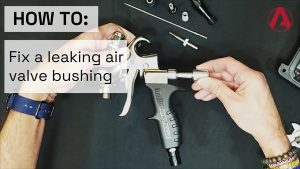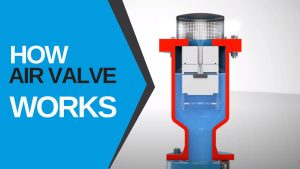HVAC systems consist of numerous components working together to supply the heat or coolness that you enjoy in your building (either at home or in offices). Understanding how these components work singular or together will be beneficial not just for the owner but for the HVAC system as well.
What is a Balancing Valve in HVAC?
A balancing valve is an automatic valve used in an HVAC system that depends mainly on the flow of water through its system to provide cooling and hearing effects in homes or in offices as the situation may require. In designing balancing valves, updated flow technology is employed to ensure that the required flow rate is achieved every time, regardless of the number of times the pressure level within the system changes.
Uses of Balancing Valves in HVAC
There are different types of balancing valves ( refer to later sections of this article for more details about this), however, all of these varieties are used for three major purposes.
- To ensure that fluids are evenly distributed among the various flow branches.
- To control the intensity of the water temperature of the heating and cooling system to keep them at a moderate level.
- And lastly, they are used as counterbalancing forces for dualized action cylinders.
What is a Static Balancing Valve?
Static balancing valves are also called manual balancing valves, digital locking balancing valves, butterfly balancing valves, and so on. They change the opening of the valve core and seat to change the flow resistance of the valve in order to achieve the purpose of regulating the flow. Their function is to balance the flow of water according to the designed proportion, increase and decrease the branches at the same time in proportion, and still meet the current climate needs of part of the load flow. Quantity demand plays a role in heat balance.
What is a Dynamic Flow Balance Valve?
Dynamic flow balance valve is also called pressure independent control valve, self-operated balance valve, constant flow valve, automatic balance valve, PICV, etc. The self-operated flow control valve automatically changes the resistance coefficient according to the change in system working conditions. Within a certain range of pressure differences, it can effectively control the flow through and maintain a constant value. That is when the pressure difference between the front and the back of the valve increases, the flow through the action of small automatic closure of the valve can keep the flow constant. On the contrary, when the pressure difference decreases, the valve opens automatically and the flow remains constant. However, when the pressure difference is smaller or larger than the normal working range of the valve, it can not provide an additional pressure head after all. At this time, the flow of the valve to the fully open or closed position is still lower or higher than the set flow.
Advantages of the PICV
- Easy Selection Pressure Independent Control Valve
- There is no CV calculation required and after the flow calculation, the appropriate valve can be selected. If the flow is 8.7 GPM the correct selection is a 9.0 GPM valve. Generally, the next bigger valve should be selected. However, an adjustment in the field is always possible considering the adjustable flow range.
- Hydronic Balancing Simplified.
- Pressure Independent Control Valves make circuits independent and they literally decouple circuits or terminals from the system. There is no balancing procedure required and for commissioning, a simple check of ΔT or flow is enough.
- To measure flow, PICVs are available with pressure ports to gauge pressure differential. A valve-specific chart may then be used to locate the matching flow from the gage pressure differential.
- Flexible Commissioning
- Plants can be commissioned in a step-by-step approach. Individual zones can be set up and no rebalancing is required which simplifies adding to the system or remodeling.
- One Piece Installation
- The compact pressure independent valve incorporates the control valve and the balancing valve. Thus, the valve saves 50% of labor costs during installation and investment for the balancing valve. Additionally, about 2/3 of the installation space (pipe length) is saved.
- Reduces Pumping Costs
- The PICV assures that each terminal, depending on its load, obtains the required flow and that overflow can be prevented. Therefore, the total flow will be lower than in systems without pressure-independent valves. The pump head follows a similar behavior and thanks to the automatic dynamic balancing the required pump head is substantially lower.
What is a Differential Pressure Balancing Valve?
Differential pressure balancing valve, also known as self-operated differential pressure control valve, differential pressure controller, voltage regulator synchronizer, differential pressure balancing valve, etc. It uses differential pressure to adjust the opening of the valve and uses the change of pressure drop of the valve core to compensate for the change of pipeline resistance, so as to keep the differential pressure basically unchanged when the working condition changes. Its principle is within a certain flow rate range, and it can be effective. Controlling the pressure difference of the controlled system is constant, that is, when the pressure difference of the system increases, it can ensure that the pressure difference of the controlled system increases through the automatic closing action of the valve. On the contrary, when the pressure difference decreases, the valve opens automatically and the pressure difference remains constant.












